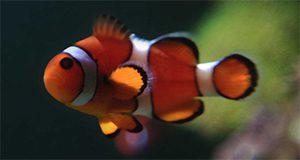Abstract
Color in fish is mostly genetically determined, but they are unable to produce red, orange, yellow, green, and some blue colors themselves. They get these colors from their food. Fish raised in aquariums or recirculating water systems without pigment supplementation in their diet will fade and lose their vibrant hues. Even in ponds, dietary pigment supplementation can make fishes brighter and more variably colored, just like their wild counterparts. This 6-page fact sheet written by F. A. Chapman and R. D. Miles and published by the UF/IFAS School of Forest Resources and Conservation, Program in Fisheries and Aquatic Sciences, addresses how ornamental fish get their colors and provides a list of ingredient sources for diets that can be used to enhance and intensify fish colors.
http://edis.ifas.ufl.edu/fa192
References
Lovell, T. 1992. "Dietary enhancement of color in ornamental fish." Aquaculture Magazine, September/October 77-79.
Royes, J. B. and F. Chapman. 2003. Preparing your own fish feeds. CIR97. Gainesville: University of Florida Institute of Food and Agricultural Sciences. http://edis.ifas.ufl.edu/fa097
Torrissen, O. J., R. W. Hardy, and K. D. Shearer. 1989. "Pigmentation of salmonids-carotenoid deposition and metabolism." CRC Critical Reviews in Aquatic Sciences 1: 209-225.
Wallat, G. K., A. M. Lazur, and F. Chapman. A. 2005. "Carotenoids of different types and concentrations in commercial formulated fish diets affect color and its development in the skin of the red oranda variety of goldfish." North American Journal of Aquaculture 67: 42-51. https://doi.org/10.1577/FA03-062.1
Unless otherwise specified, articles published in the EDIS journal after January 1, 2024 are licensed under a Creative Commons Attribution-NonCommercial-NoDerivs 4.0 International (CC BY-NC-ND 4.0) license.

